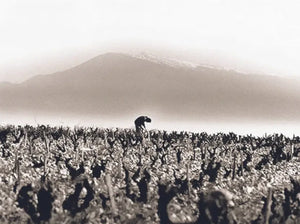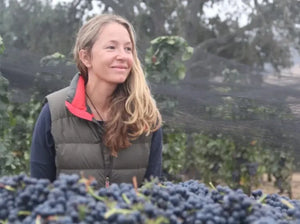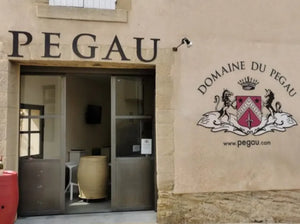Blog » Grenache
-
Provençal Mystique Among the Pines: Château SimoneChâteau Simone encompasses equal amounts of mystique and intrigue. Located just south of Aix-en-Provence, this historic estate inhabits nearly all of the Palette appellation. Its white and rosé are as distinct as the singular terroir of this centuries-old estate hidden among pines. The echelon of great French domaines like to have boundaries written by classifications, but Château Simone is a prime example of where those rules are firmly broken. This is Grand Cru Provence.The iconic castle of Simone was inhabited by the monks of Grands Carmes d'Aix, the cellars originally dug in the 16th century. In 1830, its vines were turned over to the Rougier family. Jean Rougier was the fourth generation here, and in 1948, he put Palette on the map by petitioning for and winning AOC status.The north-facing Montaiguet massif and its limestone soils play a vital role in the understated and regal nature of the wines here. Warm Provence temperatures are mitigated by its exposition and the microclimate created by high altitude, deep pine forests, and abundant rivers. Though we're in Provence, it's in many ways a wild mountain region unto itself.Simone's process spares no expense, harvesting in small bins and sorting grapes a second time after crushing. The purity of fruit from the 100-year-old-vines here is vivid, and textures are suave and polished without the least bit of influence by vanillin new oak. This address has been guided by tradition for hundreds of years, with modern advancements only implemented sparingly.
-
Chateauneuf Harmonics: Domaine du Vieux Télégraphe
Southern Rhône rarely struggles with ripeness, but finding harmony in even the top cuvées of Chateauneuf can be challenging. That's why the 2020 vintage has been on my radar. If there's one characteristic that this vintage has endowed, it is balance and refinement. And, no domaine executed better than Kermit Lynch's iconic import, Domaine du Vieux Télégraphe. Situated in the far southeast of the appellation on the enviable high-elevation plateau known simply as "La Crau", the Brunier family began tending these vines in 1898. If there is a CdP Grand Cru terroir, this is it. Iconic and mesmerizing bottlings stretch back decades (see below) from the brothers Daniel and Frédéric.
The tell-tale signs of Brunier's CdP are always a red fruit dominant core with rose petals, inimitable garrigue, smoke, and a strong mineral presence that combines with the sturdy but rounded tannins to allow these to develop for decades. A bottle of 1988 that I opened earlier this year was a revelation, though expectations are always high when old bottles of VT with excellent provenance make their way to the table. 2020 is the most anticipated vintage for me since the 2016 release. 2020 is one of those vintages that has it all for the southern Rhône––finesse, concentration, palate-gripping intensity, and a fresh, crisp finish. -
Angela's Ethereal Grenache: A Tribute to GraceSanta Barbara County is producing some of the most thought-provoking and impressive wines in the U.S. If a sense of place is what we're after, Angela Osborne's Grenache-focused label, A Tribute to Grace, is a great place for the exploration to start.
Working closely with Angela during my time at Failla Wines, in 2011, I remember the first time she poured the Santa Barbara Highlands Vineyard Grenache for our crew, and the enthusiasm that followed. With partial whole cluster fermentation and minimal new oak, the wines are light on their feet and showcase all of the delicacy that Grenache is capable of but rarely achieves in California.
Angela grew up in New Zealand, and upon tasting the greatest expression of Grenache in the world, Chateau Rayas, set out to find the perfect terroir to produce a Grenache-focused label. Angela's grandmother, named Grace, was an equally forceful inspiration toward her landing in California. As terrific as these wines are, knowing the kind person crafting them makes the appeal even greater. -
Châteauneuf du Pape CélébritéIn Châteauneuf du Pape, walking the fine line between elegance and rusticity is difficult, but Domaine Pégau embodies the precision of this balance like none other. Their progression over the last ten years to highlight a more lifted style while maintaining a sense of opulence is a hot topic for lovers of the Southern Rhône Valley. While the estate produces several cuvées, their Cuvée Réservée fulfills the best value and sharpest focus on this fabled terroir.
The Reservée has always been the prime CdP for value, but Laurence's recent move to raise the Grenache and lower the Syrah percentage in the blend has done wonders for its clarity and persistence. Licorice, dark fruits, woodsmoke, game, and wild garrigue are hallmarks of every bottle of CdP. Pégau captures these notes with an impressive mineral streak and fine-grained tannins that stand out from the pack. A rack of lamb alongside Pégau has become one of my ultimate pleasures.
Laurence Féraud works with her father, Paul, in carrying on a steep tradition started by their ancestors in 1607. The backbone of the estate is their old Grenache plantings dating back to 1907 in the famed La Crau vineyard, where limestone mother rock sits below the iconic, round galet river stones. They use whole clusters for vinification, and the wines age in large foudres crafted nearly a century ago. Both elements are crucial in preserving a sense of vibrancy in their Grenache-dominant blends.
Truth be told, the Southern Rhône pulled me into France way back when I was finishing college. Today, I pull bottles from this region with much less regularity—much of that has to do with producers chasing after power and points. However, Pégau never succumbed to altering their methods. I can't tell you how refreshing it is to have a select few producers that still makes wines that they love to drink and their ancestors would be proud of today. Pégau is everything sacred about tradition and should be celebrated as often as possible.
.svg?v=162776257677185172071724397232)






